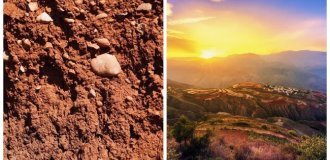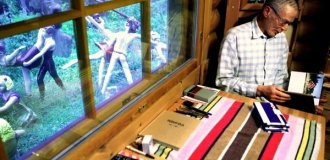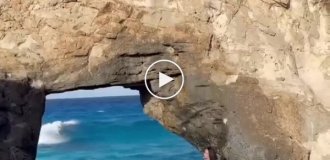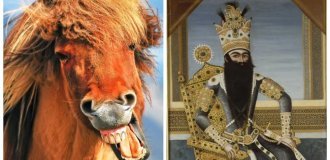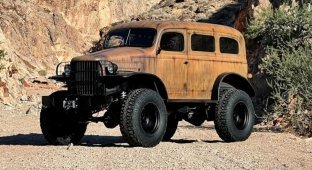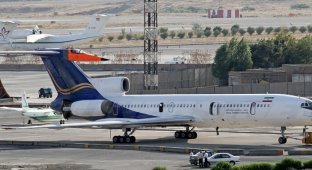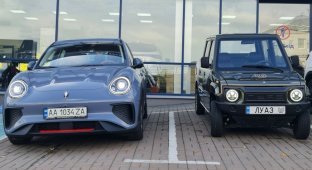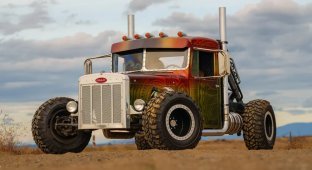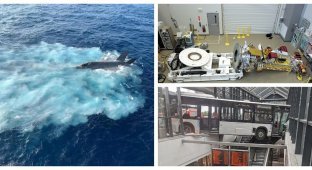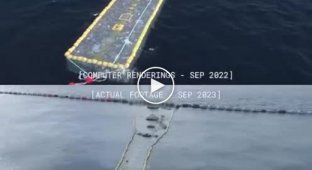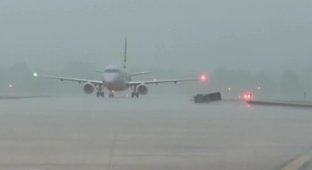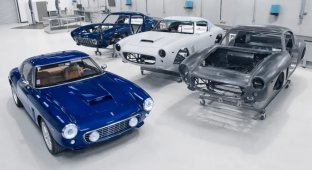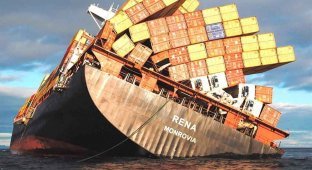Fast doesn't mean good. Casablanca-class aircraft carriers (6 photos)
The Second World War rethought the entire system of naval warfare, demonstrating the enormous importance of aviation. The US Navy followed the development of this aspect very closely, and the availability of resources made it possible, by dramatically increasing production, to achieve leadership in the aircraft carrier fleet. And quantitatively this was largely ensured by the Casablanca type. 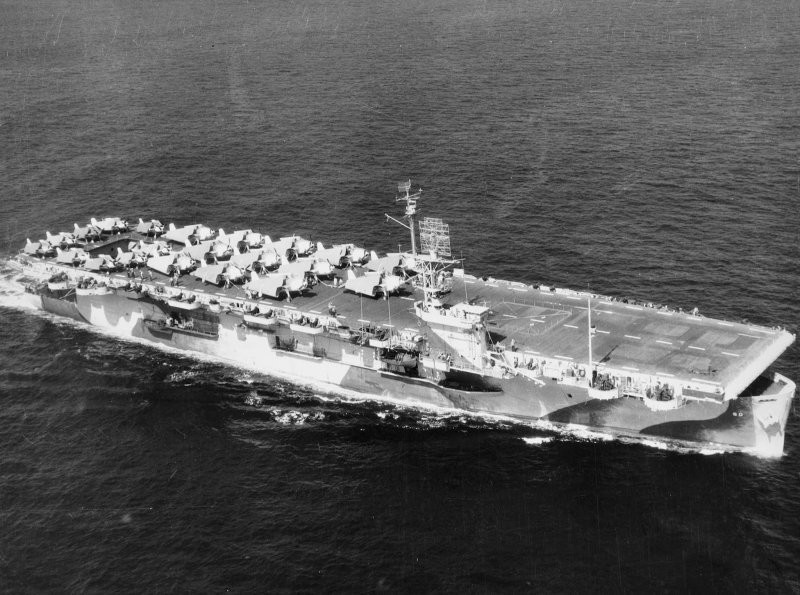
Escort carrier USS Guadalcanal, September 28, 1944
With the outbreak of active hostilities in the Pacific Ocean in 1942, the American Navy Department came to the need to sharply increase the number of aircraft carriers. After designs for a Bogue-class escort aircraft carrier were approved, development of a better ship began. This was primarily due to the fact that the Bogue class had to be built from second-hand transport ships by converting them into a small aircraft carrier, whereas a ship was required that was originally adapted for such service.
Ministry specialists, when creating a new type of escort aircraft carrier, started from the ideas underlying the Bogue and Sangamon types. A compact but capacious ship was required that could perform the functions of full-size attack aircraft carriers and at the same time serve as an aircraft transport or escort convoys.
The time factor was also especially important. The ships were needed immediately, and therefore the project included solutions that would both reduce construction time and not burden the military economy too much. So the designed Casablanca type began to look like this.
The length was 156.14 m; full width - 32.94 m, at the waterline - 19.9 m; draft - 6.32 m. The displacement showed the most noticeable difference with the “main” aircraft carriers - the standard was only 8,188 tons (with a total of 10,902 tons) versus more than 20,000 tons of normal. Initially, armament consisted of 1x5-inch (127 mm)/38 dual-purpose Mk.12 cannons, 8x40 mm Bofors anti-aircraft guns and 12x20 mm Oerlikon autocannons, although the number varied greatly between carriers. towards strengthening air defense. 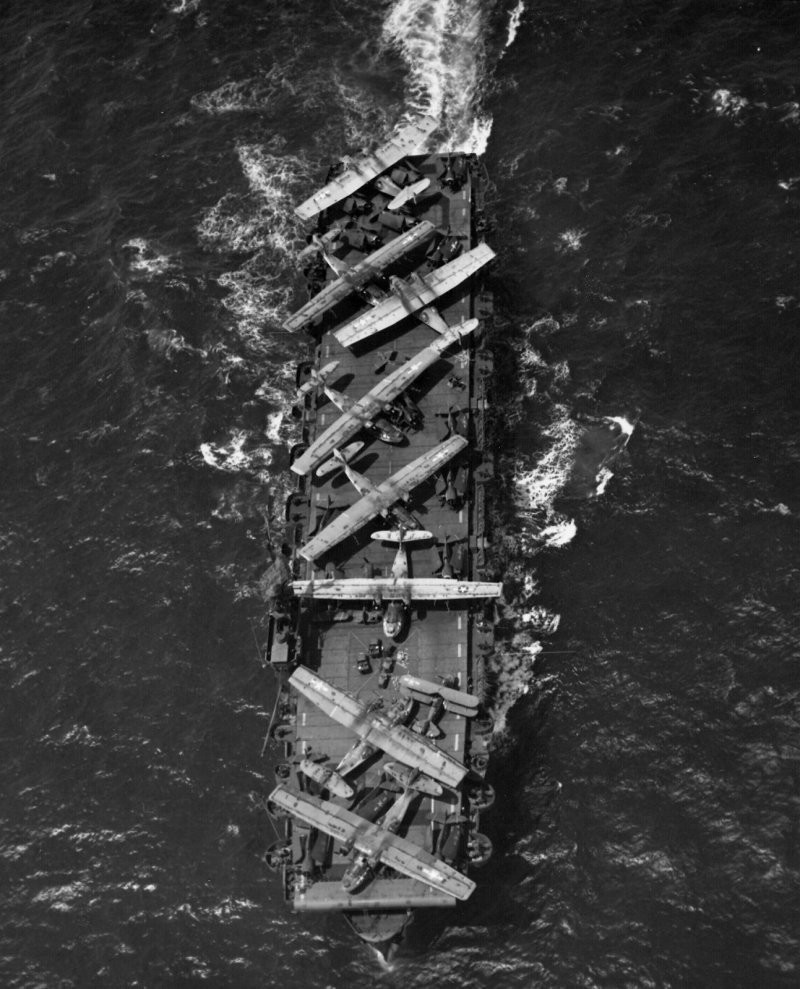
USS Thetis Bay ferrying aircraft to Alameda Air Force Base in California, 1944
As for aviation weapons, the hangar could accommodate up to 27 aircraft, was equipped with two elevators, and there was one catapult on the deck. Often, only Grumman F4F Wildcats served on aircraft carriers of this type.
A distinctive feature of the Casablanca class ships was the power plant - four Babcock & Wilcox water-tube boilers, producing 9,000 hp, powered by two Skinner Unaflow direct-flow piston engines. Since the commissioning of the British HMS Dreadnought, large warships have been equipped only with steam turbines. Now, due to the lack of gearboxes, the engineers decided to “experiment.”
Such “experiments” caused concern among the ministry commission that adopted the project. They were equally concerned that the Kaiser Shipbuilding Company promised to build 50 ships of this type in less than two years. Of course, their self-confidence was based on the experience of reducing the construction of both Essex-class aircraft carriers, which were built in 20 months, and Liberty-class transporters, which were built in just 90 days instead of the design year.
To obtain permission to build a shipyard, it was necessary to turn to the advisers of President Franklin Roosevelt. And, focusing primarily on the position of the allies - Great Britain and the USSR - it was decided to give the Kaiser Shipbuilding Company a chance. 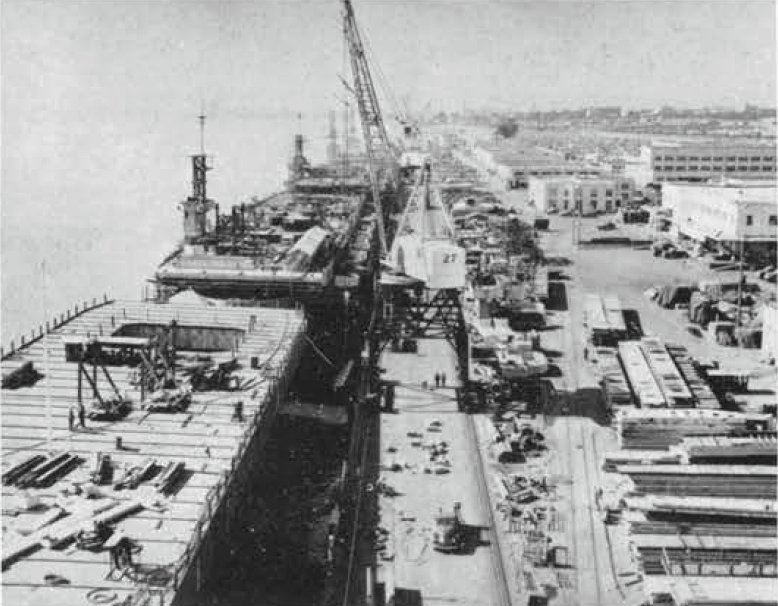
Casablanca-class escort carriers being completed at Kaiser Shipyards in Vancouver, Washington, April-May 1944. Work is carried out simultaneously on 5 ships
The shipyard fulfilled all its promises. During the period from November 3, 1942 to July 8, 1944, the American fleet received all 50 Casablanca-class escort aircraft carriers. This was the largest series of aircraft carriers built in history. During the construction of the first ships, the work process was streamlined in such a way that the last aircraft carriers went on combat missions just four months after they were laid down.
Of course, shortcomings quickly emerged - both in the design and those that arose due to haste. Thus, the speed of aircraft carriers did not exceed 19 knots, which limited the possibility of their participation in convoying transports. In addition, the power reserve was insufficient. The short runway deck made it difficult to take off andthe draft of the aircraft, and the cramped conditions of the hangar and premises on the ship caused discontent among the crews. After the war, steam engines became of such poor quality that this predetermined the fate of all ships.
As mentioned above, 50 units were built - from the CVE-55 Casablanca to the CVE-104 Munda. The ships were first named after the bays in the Alexander Archipelago, and then after the names of major battles in American history, including the ongoing war. 
The escort carrier USS Gambier Bay (CVE-73) is surrounded by fire from Japanese surface ships during the Battle of Samar
The baptism of fire for aircraft carriers took place at the Battle of Samar, part of the great Battle of Leyte Gulf. Six Casablanca-class aircraft carriers and an escort consisting of 3 destroyers and 4 escort destroyers, due to a command error, found themselves in contact with the Japanese fleet, which included 4 battleships, 8 cruisers and 11 destroyers. The aircraft carriers were able to not only repel the attack, but also forced the Japanese to retreat after they successfully hit Japanese ships with universal guns.
During the entire Second World War, the American Navy lost 11 aircraft carriers of various types, of which 6 were escorts, and of these escorts, five lost units were of the Casablanca type. Thus, Liscome Bay was sunk on November 24, 1943 by the submarine I-175 southwest of Butaritari, Gambier Bay - on October 25, 1944 near Samar by fire from the main caliber guns of the heavy cruiser Chikuma.
In addition, three aircraft carriers were lost due to attacks by kamikaze aircraft - St. Lo Oct 25, 1944 in Leyte Gulf, Ommaney Bay Jan 4, 1945 in Sulu Sea and CVE-95 Bismarck Sea Feb 21, 1945 off Iwo Jima.
After the end of the war, the US Navy Department began developing projects to repurpose escort aircraft carriers. Their insufficient speed and small hangar significantly reduced options, and service in the fleet of a large number of such low-quality ships in the presence of advanced attack aircraft carriers was impossible even by American standards. Among other inputs, the United States considered transferring all or at least part of the ships of this type to the Royal Navy of Great Britain, but the Admiralty refused to accept them due to poor-quality power plants. 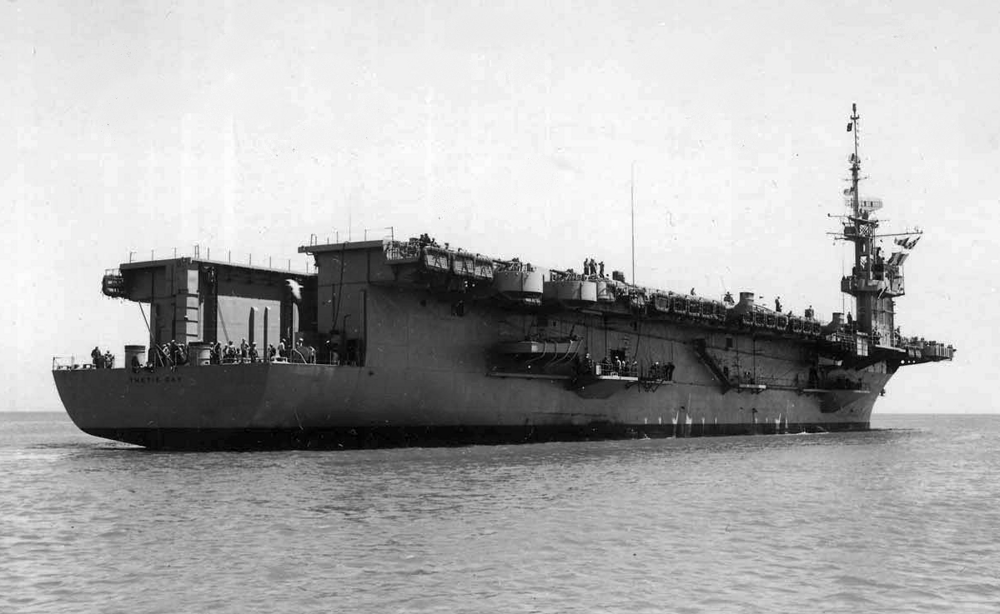
Landing helicopter carrier USS Thetis Bay, 1956
The first aircraft carriers were scrapped already in 1946. Then, in 1947-1961, most of the existing ships were cut into metal. Thetis Bay was converted into a landing ship, but it was also decommissioned in 1966 - the last of its brothers.
Thus, in less than twenty years, 50 ships of the largest type of aircraft carrier built in history were lost. Their rapid development and even faster construction contributed to their short service life. None of them have survived even as a museum ship, which is so typical for the United States. This undoubtedly suggests that the speed of development of new weapons and the demands of the moment, especially political ones, which are at the forefront, often do not agree with what will be relevant in peacetime.
